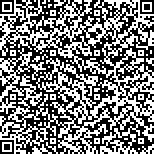下载中心
优秀审稿专家
优秀论文
相关链接
摘要

利用GIS和遥感技术相结合的方式进行洪涝灾害灾情调查和损失评估, 可以采用一种新的方法──洪涝灾害承灾极限估算法。洪涝灾害承灾极限是区域稳定性的一种表述方式, 而灾害条件下区域的稳定性取决于人-地系统中致灾因中的E{ξ k}和承灾因子的E{η k}及致灾因子和承灾因中之间的耦合关系E{ξk, ηk}.本文从原理和方法上对此作了阐述, 根据承灾极限计算原理, 在DEM数据的支持下, 利用洪水期实时图像和正常水位时期遥感图像提取的信息, 可以进行洪涝灾害的灾情评估。
For the investigation of disaster condition and loss estimation of flood and waterlogging damages using GIS and remote sensing, a new method can be used, that is, the estimation method of disaster-bearing limitation (the EMDL). The disaster-bearing limitation of flood and waterlogging damages (the DLFWD) is a way to express the regional stability, and the regional stability under the disaster condition will mainly depend on the disaster-bearing factors E{ξk}, the disaster-causing factors E{ηk}, and their coupling relationship E{ξk,ηk} in human and environment system. In this paper, the principle and method of the EMDL are stated, that is, combining with the computational principle of the DLFWD based on the DEM data, and Extracting the information from the remote sensing images of flooding period and non-flooding period, the disaster condition of flooding and waterlogging damages can be estimated.

